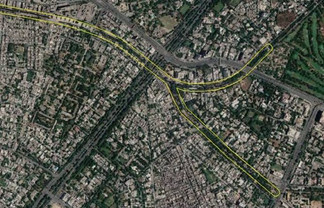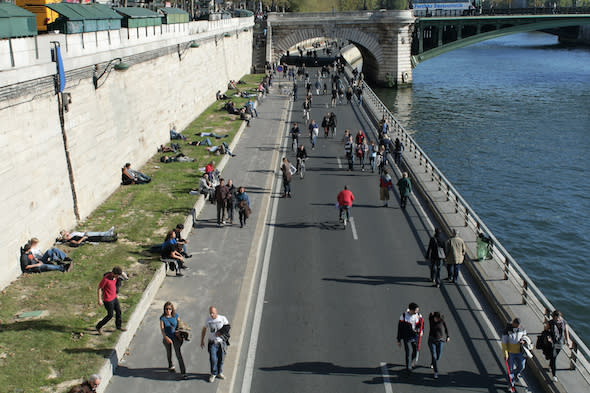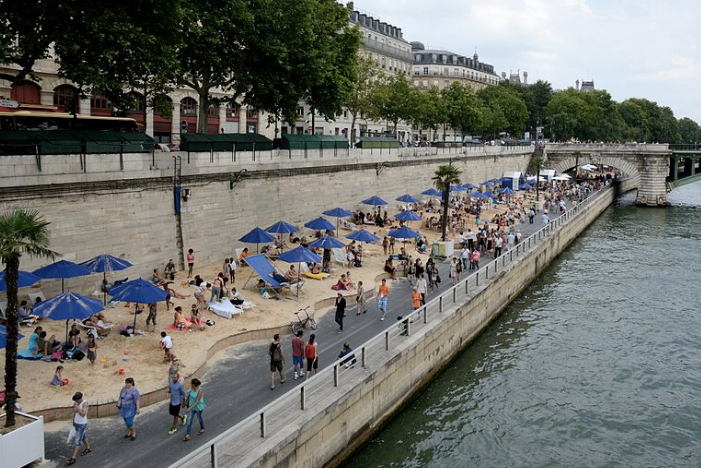Expressways: Threat to Social and Environmental Fabric
- Azbah Ansari

- Aug 28, 2025
- 3 min read
Updated: Sep 13, 2025
Co-authored by Muhammed Wasif Jalal.
The long-delayed Lahore Elevated Expressway project, first conceived nearly a decade ago and repeatedly stalled over legal, financial, and environmental concerns, is now set to formally begin construction in September 2025. Envisioned as a multi-lane elevated corridor running from Gulberg Main Boulevard to the M-2 Motorway at Babu Sabu, the project has been justified by officials as a solution to crippling traffic congestion, promising to cut travel time from 40 minutes to under 10 minutes and serve over 70,000 vehicles daily.
See the green corridor in alignment of proposed elevated expressway:
However, despite its “eco-friendly” branding, the project raises serious concerns about its impact on Lahore’s already strained urban environment. Its alignment along the city’s stormwater drain and green belts will require uprooting hundreds of mature trees, damaging the green lungs of Lahore and worsening the city’s deteriorating air quality. Moreover, critics argue that instead of easing traffic, the project is likely to funnel even more vehicles into Gulberg, already one of the city’s most congested and commercially dense areas, thereby amplifying gridlock rather than reducing it.
You can see the area and these huge amazing trees and foliage that we can't lose.
Site Coverage is done by Ar. Mareeha Aimen.
This car-centric approach is not new. More than fifty years ago, Jane Jacobs, whose name is prominent in urbanism, stood against similar projects in New York City, challenging urban planners who sought to carve expressways through living neighborhoods. A journalist with common sense and a deep love for communities, Jacobs exposed how such “development” destroyed both social and environmental fabric. Her movement inspired a global rethinking of urban planning, reminding cities that prioritizing cars over people only leads to decline.

Yet, decades later, we in Pakistan are repeating the same mistakes. For the past two decades, our construction practices have focused obsessively on roads and expressways, producing short-lived gains but long-term chaos, more congestion, more pollution, and greater health and sustainability crises. Are we willing to learn from history, both theirs and our own, or will we continue consuming our environment and disappointing our citizens in the name of “progress”?
The European experience offers a cautionary tale. In the postwar decades, many cities across Europe enthusiastically built urban expressways, believing them to be symbols of modernity and solutions to traffic congestion. By the 1970s, however, it became clear that these highways came at an enormous social and environmental cost—cutting through historic neighborhoods, erasing riverfronts, and flooding city centers with vehicles. Recognizing their mistake earlier than most, European cities began dismantling or downgrading these projects. Paris, Madrid, and Oslo, for instance, redirected policy away from car dominance and toward restoring walkability, public space, and sustainable mobility. The result has been not just smoother transport systems, but healthier, more livable urban cores.
One striking case study is the Georges Pompidou Expressway in Paris. Built in 1967, it sealed off the Seine riverbanks and degraded one of the world’s most iconic urban landscapes. Public opposition grew steadily, and by the early 2000s, the city began experimenting with summer closures under the “Paris Plages” program, temporarily turning the motorway into a promenade. The popularity of this initiative led to permanent removal in 2016. Today, the riverfront is a thriving public realm, with parks, cycling paths, cultural spaces, and millions of annual visitors. What was once a noisy urban scar has become a civic treasure.
Such examples are directly relevant to Lahore. If leading global cities, after decades of trial and error, are now tearing down urban expressways to revive human-centered environments, why are we still building them? Elevated freeways may appear to promise efficiency, but history shows they entrench car dependency, accelerate pollution, and destroy the very qualities that make cities worth living in. Lahore has the chance to learn from others’ mistakes rather than repeat them. The question is whether our policymakers will have the foresight and courage to shift from car-centric projects to people-centric planning.
The lesson is clear: cities that once built elevated expressways are now dismantling them, realizing that progress lies in greener, more people-centered environments. Lahore now faces the same choice, either repeat outdated mistakes or invest in public transport, walkability, and sustainability. The Elevated Expressway may promise speed for a few, but it risks long-term damage for all. This is not just about a road; it is about the kind of city we want Lahore to become.







































Comments